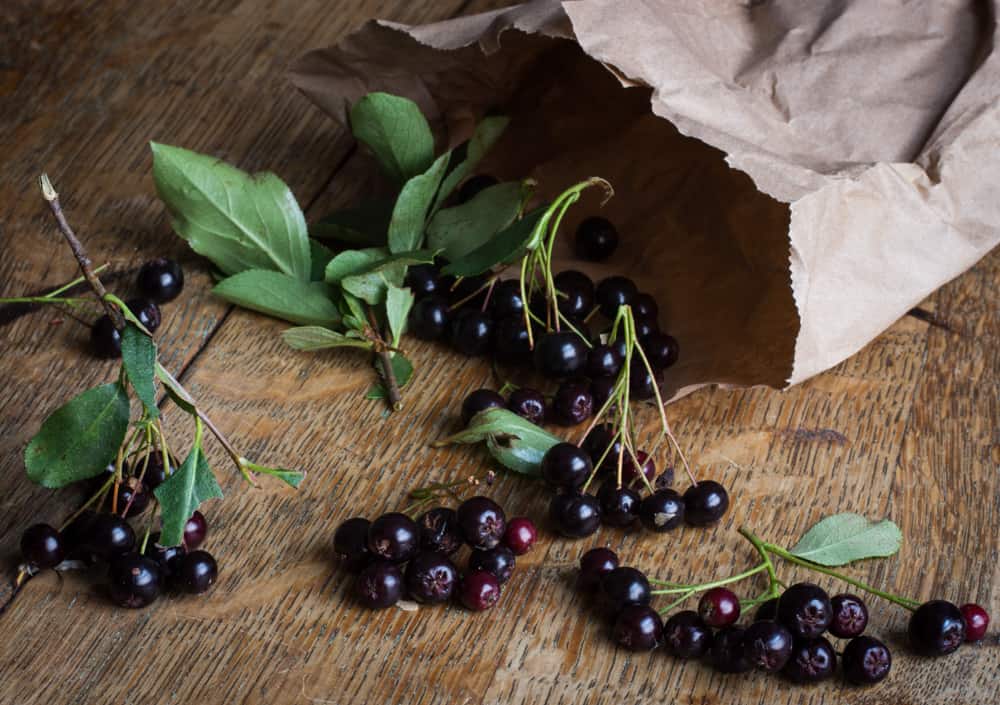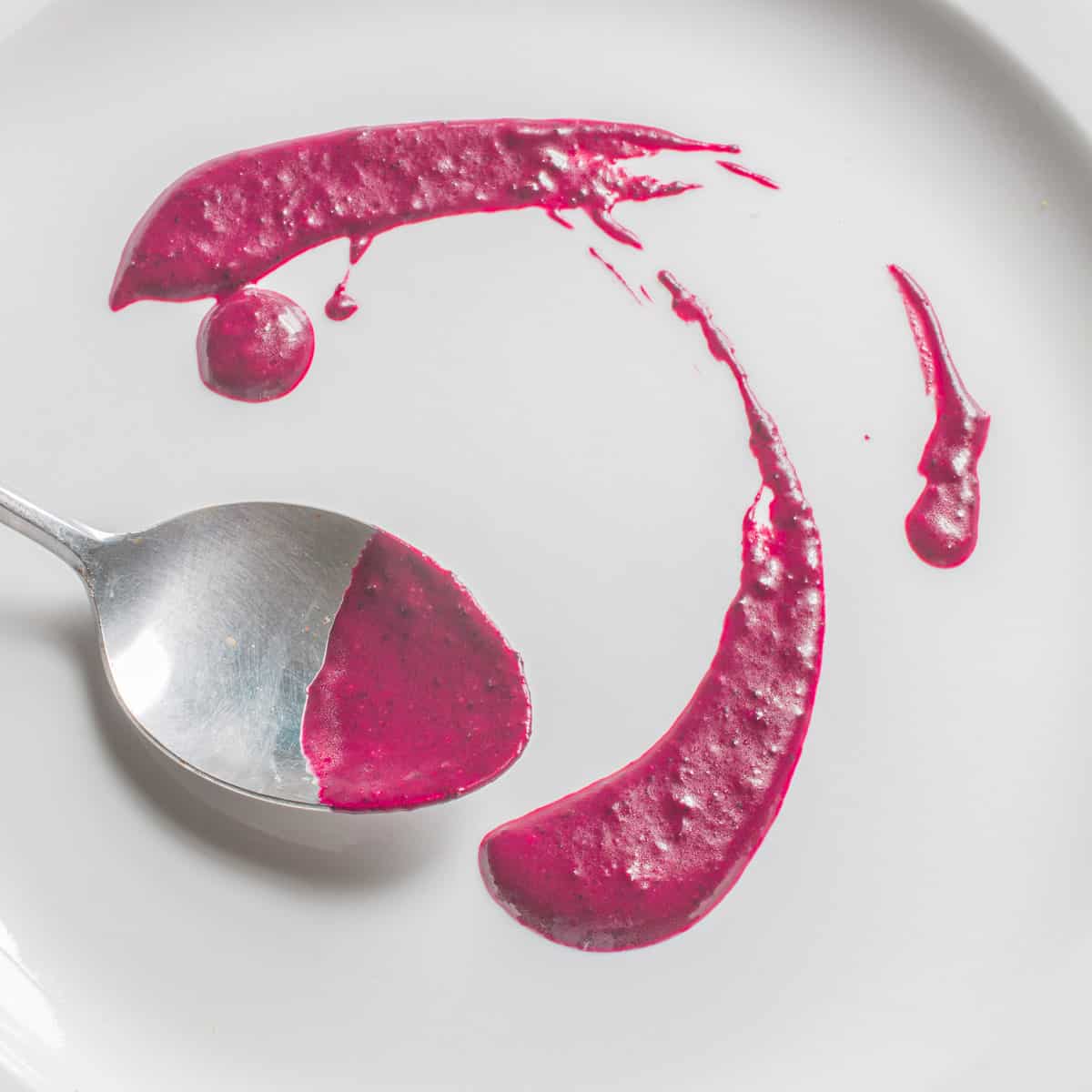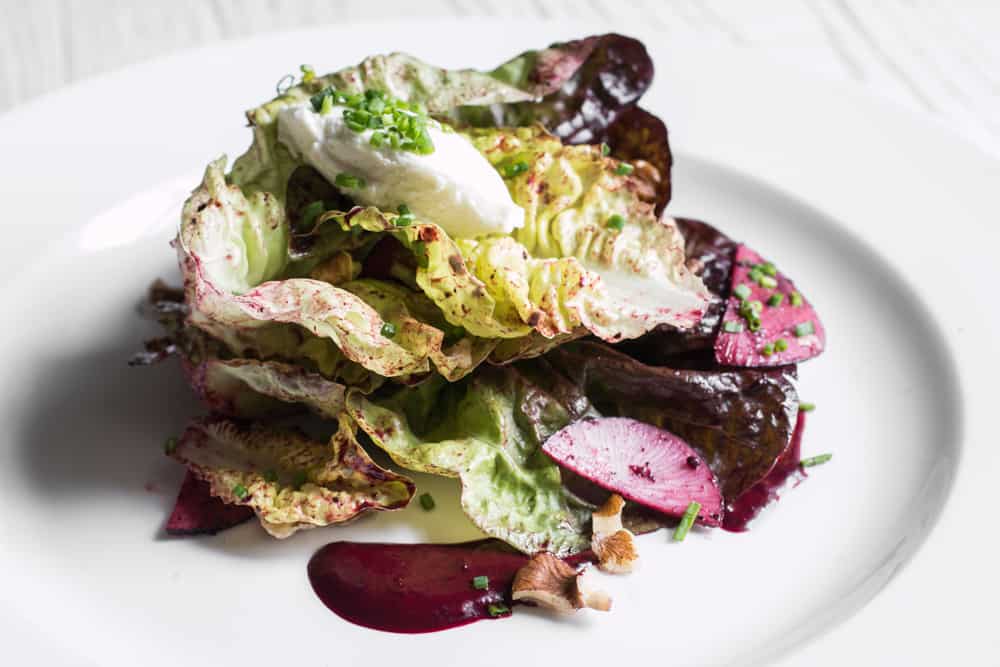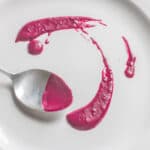One of the all-time best aronia recipes is this vinaigrette you can use for salads and serving with pork or chicken. It was on the menu regularly at my restaurants.

I'll be honest and tell you I've never picked Aronia berries (a.k.a chokeberries or Aronia melanocarpa) in the woods after a long hunt, or after walking around the edge of a clearing during berry season. They're just not that common where I've hunted. But they're often in urban areas, and I have no problem picking them if it isn't on a busy street or next to a freeway.
Picking things in public takes a type of meditative state though, at least for me. I remember one of my first times picking these behind a goodwill after a hunt for cheap plating spoons.
I walked out of the store with my plastic bag of bric-a-brac (half of which I knew I'd resent the moment I got back to my apartment but whatever, I love thrift stores) and I saw a couple bushes ripe with berries. The parking lot was a little exposed while picking and it was in broad daylight, but if I could score some spoons *and* a gallon of chokeberries, I'd hit the jackpot.
I picked as quickly as I could and no one said anything, but you can feel people's eyes, and, it's awkward.
My chokeberries this year came from the same place, but now I go to the store because I know there's chokeberries, hunting for spoons is just cover. I washed them, threw them in the freezer and forgot about them for a while until I was thinking of a salad for one of my 4 weekly changing menus at Lucia's.
I do a lot of typing menus on the fly now, more cooking off the cuff than I'm used to with so many menus changing in quick succession. I knew I could make some sort of vinaigrette out of the berries in my freezer though, so I typed up the menu and just planned on making myself and not delegating it out to my prep cooks-a strategy I have to use with any ingredient I can't afford to spend teaching the preparation of twice.
It only took all damn week, but I'm finally happy with it.
One reason I like Chokeberries is because they don't have a stone to remove, just a few small seeds, which are actually smaller than raspberry seeds so you can just buzz them up in the blender and they're good to go. The other reason is their color. It's the richest red-purple, makes a wicked cool vinaigrette, and would also be a great addition to your finger-paint collection (wear gloves when you toss the salad unless you want to look like Grimace from the old McDonald's adds).

The vinaigrette has been the highlight of my week mixed with lettuces and few different dance partners. I've put them with an evolving mix of honeycrisp apples, black radishes, fresh dill, black walnuts, and soft chevre. Everytime I plate one of the salads I can't help but feel just a little silly, like a kid playing with finger-paint.

Aronia Berry or Chokeberry Vinaigrette
Equipment
- 1 Blender
Ingredients
- 1 cup chokeberries
- ½ cup honey
- 1.5 Tablespoons dijon mustard
- ¼ cup shallot diced ¼ inch
- ½ teaspoon kosher salt
- ¼ teaspoon fresh ground black pepper
- 1 cup virgin sunflower or extra virgin olive oil
- 1 cup flavorless salad oil like grapeseed, safflower or canola
- ¼ cup water
- ½ cup high quality red wine vinegar
Instructions
- Heat the berries, honey, and water until hot throughout and syrupy, then reserve and cool. Combine the berries and their syrup, and all ingredients but the oils in the bowl of a blender.
- Process the mixture, slowly adding the oils to form an emulsion. When the oil have been added and the
- has thickened, transfer to a labeled, dated container and refrigerate until needed.
Notes
Nutrition



Nicky
This vinaigrette is fantastic! Thank you for sharing your recipes. I will be trying several of them, as our two bushes finally produced a great deal of fruit this year. I have noticed that there are several Black Aronia Berry plants at Thompson Park in West Saint Paul, since the landscape and park renovation. In case you need a new foraging source. 🙂
Alan Bergo
Haha I’ve picked them there! Thankfully I moved back to the cities last year and I have a few plants in my yard now. Thanks Nicky.
Debra
I got the aronia berries from my friend at the farmer's market, and I looked for a recipe besides smoothies. Your vinaigrette recipe is great. I worried that it might be too sweet, but it's just right.
Alan Bergo
Hey thanks Debra, this is an old favorite of mine.
Michelle
Perfect! A little thick, which makes me think it will be great with grilled salmon or chicken too.
Alan Bergo
Yes, better too thick than too thin. It's great with grilled meat.
Melissa Duffy
I'm wondering how long this recipe would last in the fridge before going bad?
Alan Bergo
A very long time as it's a vinaigrette.
Melissa Duffy
I'm a wild harvester and each year try new ventures. This year I threw some thimbleberries into white vinegar. The vinegar is already a lovely red/pink color. in my oven over low heat I am 'melting' the sugar wild Sitka spruce tips that has been hanging out on my sunny windwoside for 3 months. I accidentally made some 'Stka spruce rock candy by overcooking the mixture on the stovetop. It breaks apart nicely and I sent some to my son as a birthday gift. My questions: Does it matter if I refrigerate the thimbleberries and white vinegar or just leave them out 'soaking' for th emonth? did you 'shake your' fruited vinegars ever? Did you ever just let the berries soak in white vinegar? I used cheapest possibly white vinegar and was thinking of adding some honey and maybe some peppermint leaves in some...
I've finishing up some Saskatoon, persimmon, ginger freezer jam I made last year and I too harvest behind MY local thrift store. In my case it is some small yellow and red plums. I've made plum jam with lime and ginger and cardeomn but no one but me liked it!
Kathy Connelly
Recently we enjoyed this salad at Lucia's - exceptional. Love what you are doing with the menus.
Alan Bergo
Glad you liked it Kathy. Lucia's is a complex restaurant with a staff I've inherited, but I think the place gets a little better every week.
McRae Anderson
I guess I'll need to start harvesting these from the plants by our driveway... just never knew what to do with them other than make jelly/jam with them.
Joe Wiercinski
Here's another comestible to look for in the mushroominous woods and berriferous vales of Pennsyltucky north of Picksburgh. Thanks for the recipe.